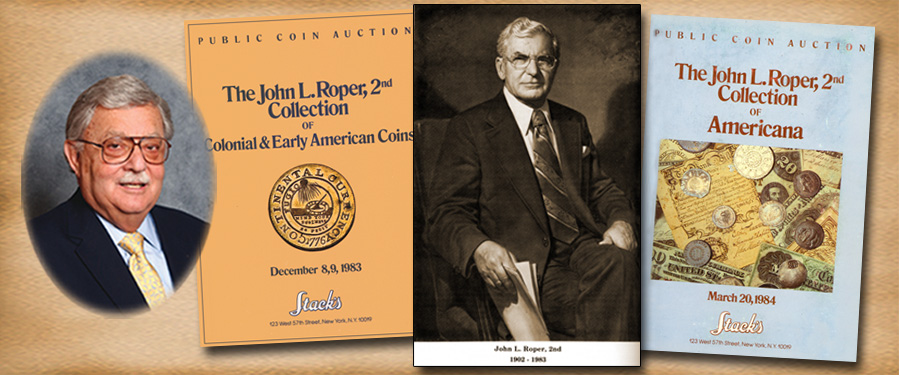
Previously, I wrote about old-time collector John L. Roper of Norfolk, Virginia. I told about his profound interest in the coins used primarily during our nation’s colonial period, including the foreign coins that circulated here and those struck for the colonies and during the early days of our country.
In order to trace the history of money during the early development of America, Mr. Roper also assembled a very large collection of colonial notes with an emphasis on pre 1770 dated colonial issues. Paper currency was used side by side with the coinage available during that period.
His collection included early U.S. private bank notes, high quality Confederate notes and a complete type set of Fractional Currency with specimen notes. To further round out his currency
collection he assembled a type collection of federal currency from the $1 to the $100, highlighted by Demand Notes and Interest Bearing notes. He also assembled a type collection of Encased Postage Currency from the 1¢ through the 90¢ issues.
The collection displayed the various currencies used in America from our earlier days until approximately the Civil War period. The importance of the John L Roper collection of early currency of America was emphasized when he was asked to provide to the Smithsonian Institution a series of notes for a display to celebrate the 200th anniversary of "Banking in America." He loaned the notes the Institution needed to complete their bicentennial banking display, which was attended by the Secretary of the Treasury along with four earlier Secretary of Treasury officials.
In 1970, to commemorate the opening of the United Virginia Bank’s new building in Norfolk, Virginia, he lent his collection for educational purposes. The bank was also the caretaker of the famous historical "Mace of Norfolk,” which originally gave power to the colonial governor to rule for England. The exhibit of the Mace together with the Roper Collection was a great part of this important historical event for Norfolk. It remained on display to permit the public and students to visit and see the importance of money to the Colony.
Stack’s had the honor and privilege of helping to build this important and noteworthy collection through the years. In his will, Mr. Roper mentioned Stack’s as the firm to sell his cabinet at public auction. The auction of the colonial and early coins was held by Stack’s in December 1983 and the currency collection was offered for sale in the spring of 1984. Stack’s was proud to have been selected to present this collection to collecting public. Both sales were great sources of information and coins with the Roper pedigree became important parts of the next generation of collections.





